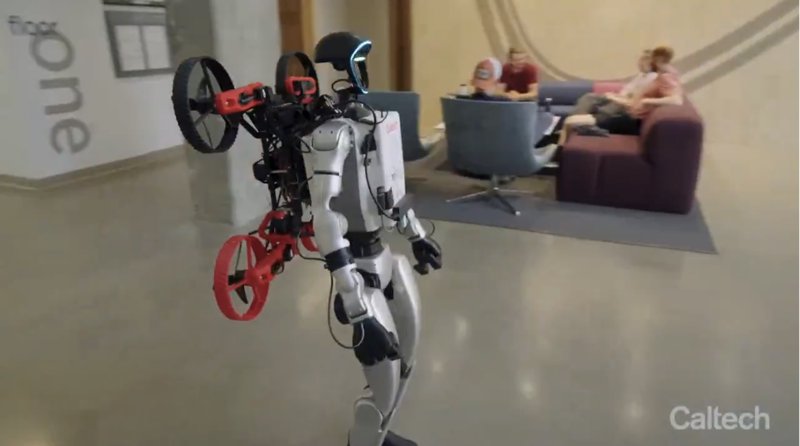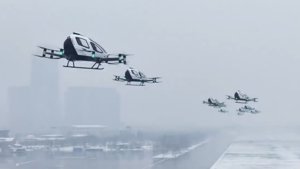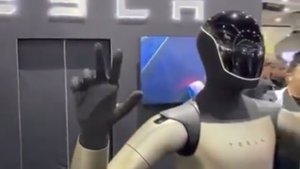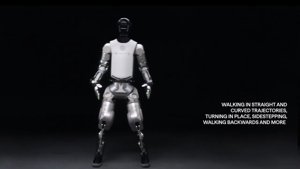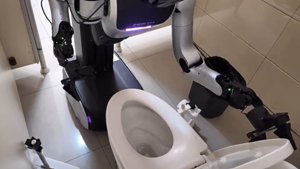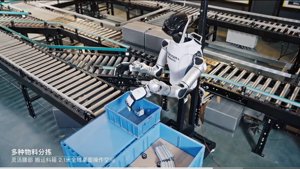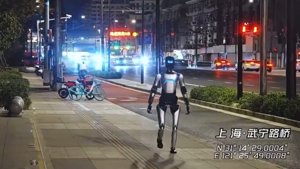The Grand Stage of Robotics: Lone Acts Yield to Robotic Duets
Title: Robotics’ Next Act: Humanoids Launching Drones Description: Forget the solo robot; the future is multi-robot systems. Witness the Caltech-TII collaboration launching a new era of coordinated machine intelligence.
In the grand, clanking theatre of robotics, we’ve witnessed solo performances for decades. A single arm assembling an automobile, a lone rover kicking up Martian dust. But the next act is a duet, a symphony of coordinated machinery. The latest headliners emerge from Caltech and Abu Dhabi’s Technology Innovation Institute (TII): a bipedal machine that carries, and then launches, a transforming drone from its chassis. It’s less a piggyback ride and more a vivid glimpse into a future where robots don’t just function; they integrate.
This is not merely a parlour trick. This signals the arrival of sophisticated Multi-Robot Systems (MRS), where the collective capability vastly eclipses the individual components. The age of the solitary robotic hero is drawing to a close; the epoch of the robotic super-squad is dawning.
The Caltech-TII Power Couple
Dubbed X1, this pioneering setup involves a modified Unitree G1 humanoid carrying a bespoke drone known as M4, a Caltech creation capable of both flight and ground traversal. In a recent proof-of-concept, the humanoid navigated the Caltech grounds, inclined forward, and deployed M4 with the finesse of a mechanical falconer. The drone subsequently took to the air, landed, and seamlessly transitioned to wheeled mode to pursue its objective with efficiency.
This project, the culmination of a three-year partnership between Caltech’s Center for Autonomous Systems and Technologies (CAST) and TII, is engineered to fuse disparate robotic movement modalities—walking, driving, and flying—into a single, coherent entity.
“Currently, we have robots that fly, robots that drive, and robots that walk,” explains Aaron Ames, Director of CAST. “But how do we synthesise these differing modes of locomotion into one integrated package, allowing us to leverage the strengths of all while mitigating the inherent weaknesses of each?”
The humanoid component provides the agility necessary to traverse complex human-centric environments (stairs, doorways, unpredictable terrain), while the drone delivers rapid aerial surveillance and deployment. It constitutes an ideal pairing for high-stakes situations such as disaster response, where an on-the-ground asset requires an “eye in the sky” delivered to a precise location with immediacy.
Beyond the Single Unit: The MRS Doctrine
The concept of multi-robot systems is not novel, but its tangible, real-world deployment is finally catching up with theoretical promise. An MRS is defined as an assembly of robots designed to harmonise their actions toward a shared objective that would prove arduous or unattainable for a solitary machine. Consider the gulf between a lone instrumentalist and a full orchestra.
One of the most spectacular, if sonorous, illustrations is SpaceX’s Falcon Heavy rocket architecture. The two accompanying boosters and the autonomous spaceport drone ships (ASDS) they target form an immense multi-robot system. The boosters must autonomously manage their descent to Earth while communicating with the drone ships, which are themselves robotic platforms tasked with maintaining their exact coordinates on the ocean surface. This intricate, high-stakes ballet is a masterclass in machine collaboration.
Other practical deployments are already woven into the fabric of modern industry:
- Warehouse Logistics: Swarms of robots, such as those deployed by Amazon Robotics, coordinate to shift shelving units and fulfil customer orders with unnerving precision.
- Modern Agriculture: Teams of compact, autonomous tractors and UAVs collaborate to sow, monitor, and harvest crops, optimising for resource conservation and yield output.
- Emergency Response: Integrating ground-based robots capable of entering compromised structures with aerial drones providing oversight is a standard operating procedure in zones afflicted by catastrophe.
The Next Grand Endeavour: A Martian Group Project
The correspondence that precipitated this very article astutely highlighted the ultimate proving ground for MRS: the colonisation of Mars. Dispatching humans to the Red Planet is fraught with inherent dangers and prohibitive costs. Preceding them with a robotic vanguard is not merely prudent; it is an absolute necessity.
Envision a strategic deployment where a fleet of machines, operational years before the first human footprint mars the surface, works in concert to establish a viable habitat.
- Bipedal Constructors: Robots akin to X1 could undertake dexterous tasks, assembling structural components and maintaining complex machinery using manipulation skills paralleling human capability.
- Wheeled Transporters: Larger, ground-based automatons would manage the conveyance of raw materials excavated from the Martian regolith.
- Aerial Surveyors: Drones, potentially launched from the backs of their humanoid counterparts, would map topography, analyse geological features, and scout for vital resources such as subterranean water ice.
This division of labour—a fundamental pillar of MRS philosophy—ensures that every task is allocated to the robot intrinsically best equipped for it, forging a resilient, fault-tolerant infrastructure capable of preparing Mars for human arrival while minimising risk to biological life.
The Robotic Dream Teams of the Near Future
As our gaze extends forward, the potential configurations for multi-robot systems are constrained only by the limits of our ingenuity (and, candidly, budgetary allocations). What other synergistic robotic teams might we soon encounter?
- Deep Ocean Symphony: A large autonomous submersible could function as the command vessel for a swarm of smaller, highly manoeuvrable underwater drones. The mothership supplies power and overarching navigational guidance, while the swarm penetrates the abyssal trenches or explores intricate coral ecosystems, generating detailed three-dimensional cartography of the seabed.
- Mobile Medical Unit: Within a clinical environment, a robotic orderly could transport a smaller, specialised automaton designed to administer precise dosages or execute delicate procedures, all while a network of environmental sensors continuously streams the patient’s vital signs and ambient room metrics.
- Urban Infrastructure Crew: A heavy-duty ground robot could serve as the transport platform for a team of smaller “inspection” bots and a dedicated cleaning drone. The ground unit positions the team, the inspectors traverse pipes or building facades to identify structural faults, and the drone employs high-pressure jets to cleanse areas inaccessible to conventional means.
The partnership between Caltech and TII transcends a mere impressive technical demonstration. It stands as a potent declaration regarding the trajectory of robotics. The lone wolf is being superseded by the integrated pack. By harmonising their distinct capabilities, robotic systems can achieve a level of versatility and resilience poised to unlock solutions to some of humanity’s most pressing challenges—here on Earth, and on worlds yet to be settled. The future isn’t simply automated; it is a collaborative undertaking.
